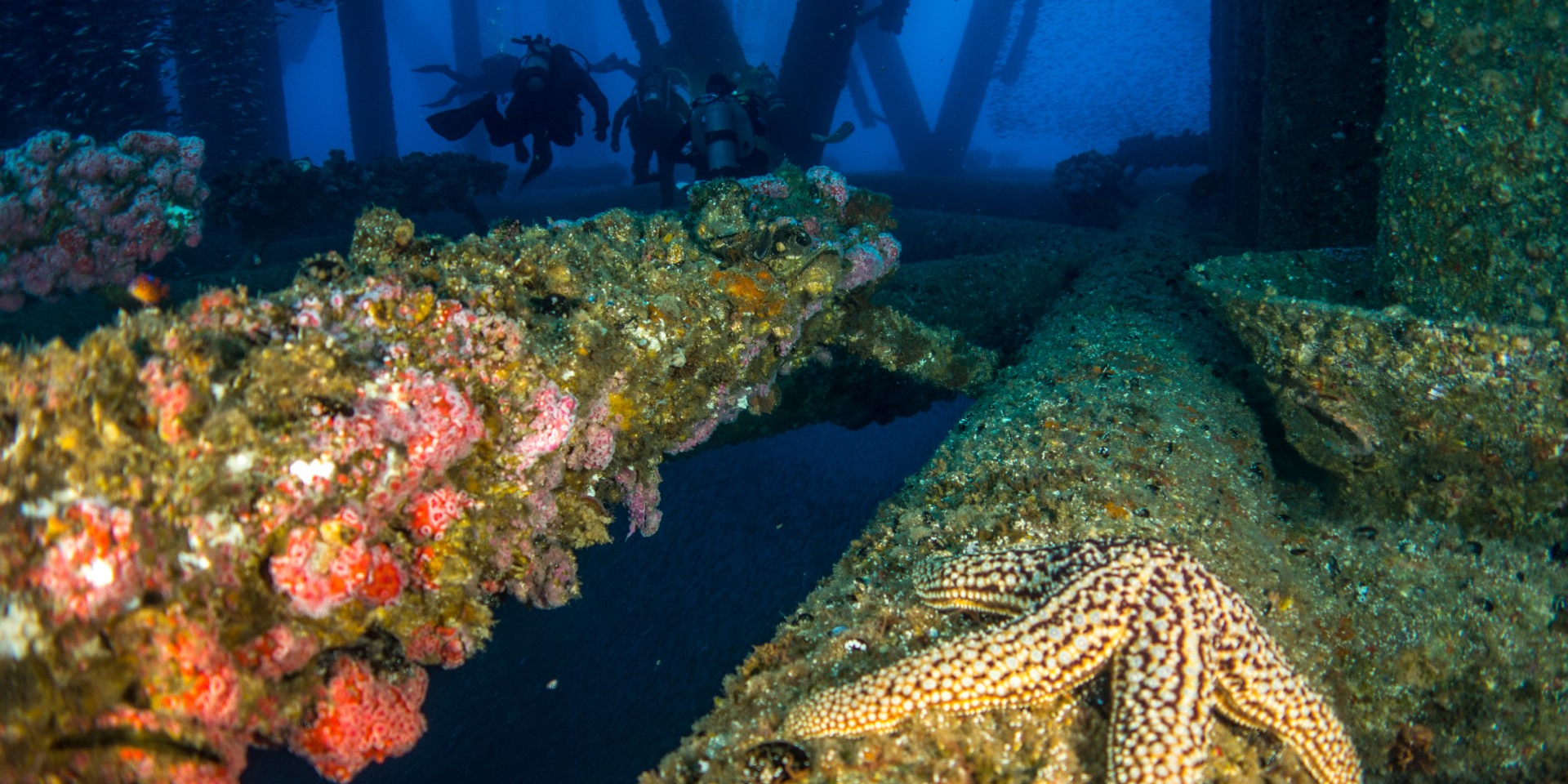News 2024
Laws need to allow ‘rigs to reef’ decommissioning of offshore structures, experts say

Legislation forcing the removal of end-of-life offshore structures need to be revised to allow for ‘rig-to-reef’ repurposing that could have environmental and socio-economic benefits, according to researchers.
Marine artificial structures (MAS), such as oil and gas platforms and offshore wind farms, have a finite operational period and will eventually need to be decommissioned. By 2030, several thousand platforms will need to be decommissioned, but current legislation for the northeast Atlantic requires nearly all structures to be completely removed at end-of-life at significant financial cost, and perhaps cost to the environment also.
A series of recent publications in the journals Nature Sustainability and Journal of Environmental Management led by researchers at the University of Plymouth and University College Cork, saw a group of international researchers carry out a comprehensive analysis of existing studies into the environmental and societal impacts of marine artificial structures – including oil and gas platforms and offshore wind farms – all over the world.
They found that while MAS may not necessarily replicate the full benefits of natural offshore reefs, they can provide some limited ecological benefits, like introducing habitat that can increase the abundance of fish species. According to experts, these ecological benefits might support international environmental targets. Socio-economic benefits were also found including significant financial savings and continued provision of ecosystem services.
Writing for Nature, the lead authors of those publications now say that politics, rather than science, has been the driving force for decisions about how to decommission MAS.
They argue a review of decommissioning strategies “is urgently needed to ensure that governments make scientifically-motivated decisions about the fate of oil rigs in their regions, rather than sleepwalking into default strategies that could harm the environment”.
Dr Antony Knights is Senior Lecturer in Environmental Sustainability at University College Cork and lead author of the article in Nature. He said:
“We advocate decommissioning legislation is modified to allow for alternative decommissioning options on a case-by-case basis rather than continuing with the one-size-fits-all approach. In the northeast Atlantic, change ought to allow for alternative options to complete removal, where and when it has been shown that the costs and benefits to the environment and society outweigh those of removal.
“And where conversion of rigs-to-reefs has been allowed, we advocate for the collection of robust, objective scientific data for an environmental and societal cost-benefit analysis to ensure transparent and evidence-based decision-making. Our comment outlines a framework for local government to assess the best way to decommission offshore rigs,” he said.
Achieving net-zero is a central aim of international governments to mitigate global climate. Decarbonisation and the move away from reliance on fossil fuels is a key component of those efforts to meet 2050 targets placing the decommissioning of existing offshore infrastructure front and centre of the challenge.
Dr Anaëlle Lemasson, Post-Doctoral Research Fellow at the University of Plymouth and co-author of the Nature comment article, said: “Many of the structures we see in the ocean today were put in place at a time when environmental considerations weren’t in people’s minds. There were also no legal requirements covering possible environmental impacts, or what might happen to these structures once they reached the end of their useful lives. That is certainly changing, and transitions away from fossil fuels mean it is vital we have this debate now. It is also critical that we learn lessons from the past, particularly at a time when increases in offshore renewable energy (ORE) installations are likely to result in more artificial structures being sited out at sea.” The Nature comment piece is now available to view at https://www.nature.com/articles/d41586-024-00645-0
The research that informed it was carried out as part of the INSITE Synthesis project. Funding support was from the Natural Environmental Research Council (NERC), the Centre for Environment, Fisheries and Aquaculture Science (Cefas), and sponsored by joint industry partnership of North Sea asset operators.
